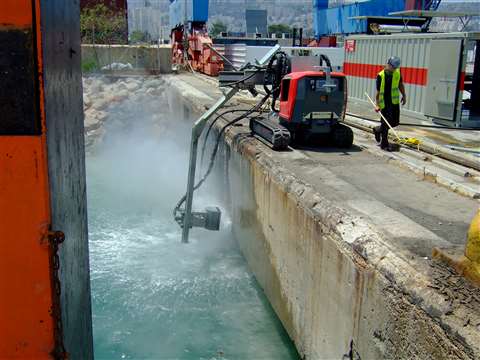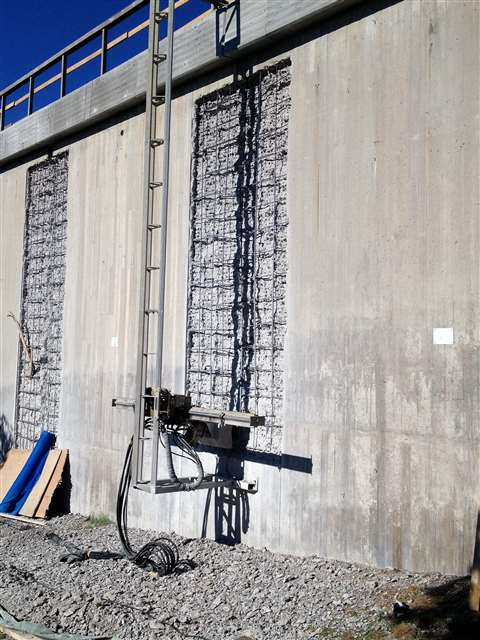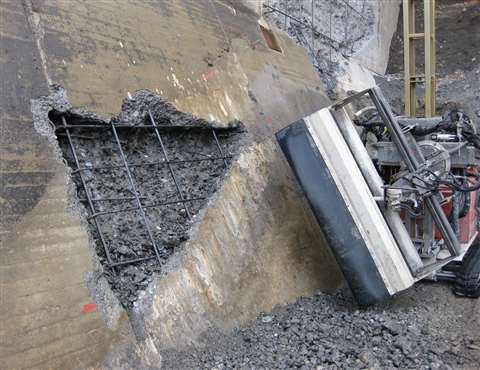Hydrodemolition - Five concrete errors and how to fix them
24 June 2021
Pouring concrete is a complex process. One slight miscalculation on any of the numerous variables can spoil a whole batch. And unfortunately, mistakes are not always evident straight away. While concrete errors can certainly cause problems for timetables and budgets, advances in robotic concrete removal methods are making them easier to fix — without starting all over again.
For large, multi-phase construction projects, hydrodemolition offers a solution that can minimise the overall impact of concrete errors and often get contractors back on track for on-time project delivery.
Here are five common concrete errors that hydrodemolition can help solve.
Formwork failure
Whether it is a minor shift or a full-on blowout, formwork failures can spell disaster in terms of lost productivity, since correcting it often relies on handheld equipment. There are several downsides to this approach. First, it is slow, backbreaking work that takes a huge physical toll on crew members. Additionally, heavy vibrations damage rebar and leave microcracks throughout the remaining concrete, which leaves contractors with no choice but to demolish most, if not all, of the structure.
 Impact-free concrete removal using hydrodemolition. All photos in this article courtesy Aquajet
Impact-free concrete removal using hydrodemolition. All photos in this article courtesy Aquajet
Using high-pressure water jets as powerful as 40,000 psi, hydrodemolition blasts away layers of concrete, cleaning and descaling rebar in the process. This method also eliminates the risk of microfractures, creating a structurally sound foundation for any necessary concrete repairs. It also frees up the rest of the crew to focus on other tasks — like getting concrete forms back in place — to keep the job on schedule.
One contractor dealing with a formwork shift on a small overpass project needed to remove part of the deck and abutment to a depth of 3 ft (0.9 m) and repour to correct the shift. Using hydrodemolition, the contractor was able to complete removal with minimal impact on the structure.
Concrete segregation and other batch problems
Another contractor relied on hydrodemolition to help solve a difficult concrete segregation problem. When water infiltrated the forms and washed out the cement paste, leaving just the aggregate behind, the contractor was able to set parameters for the hydrodemolition robot that removed just the segregated material. The sound concrete was left intact and ready for repair.
Hydrodemolition robots allow contractors to adjust the robot’s stroke to control the depth of cuts and vary the pressure of the water jet depending on whether they are removing loose, deteriorated concrete or lowering the sound concrete to a pre-determined depth. Once the parameters are set, the robot meticulously maneuvers over the designated area removing material according to set values. In some situations, this might include taking out everything to a specific depth. In others, it might involve demolishing only weak or deteriorated concrete by adjusting robot’s settings, such as stroke or flow.
 Contractors removing only poor quality materials, leaving sound concrete intact
Contractors removing only poor quality materials, leaving sound concrete intact
Additionally, the hydrodemolition robot’s selective removal capabilities can provide a cost-effective solution for other concrete mix problems. For example, during a recent bridge construction, delivery of a bad batch of concrete threatened to derail the entire project.
The concrete was already setting as crews poured. Vibrating and other correctional methods were unsuccessful, and the concrete fell 350 mm (13.8 in) short, leaving a mesh of exposed rebar. The contractor used hydrodemolition to selectively remove the poor-quality concrete without damaging rebar or the overall stability of the structure.
The productivity of the robot meant correcting the concrete error did not impede the overall schedule of the project. Because they were able to save the rebar and existing structure, the cost of repairs was minimal.
Off-spec embedded materials
Sometimes the concrete error is not a result of the concrete mixture itself. In situations where off-spec materials such as rebar or anchors need to be removed from set concrete, Hydrodemolition provides the power and precision necessary for fast, efficient removal.
In addition to setting parameters for stroke and pressure, robots can be programmed to cut geometric shapes, such as circles, triangles, squares or parallelograms.
This allows contractors to remove just enough material to reach the imbedded item, whether it is just below the surface or several metres down.
One contractor discovered they needed to replace bolts on anchors imbedded 1 m (3 ft 3 in) into the concrete. It was able to cut circular holes — just big enough to free the anchors — minimising removal and increasing efficiency of the repair project. The contractor was able to correct 12 to 15 anchors in 12 hours using a hydrodemolition robot.
Concrete repairs to existing structures
Hydrodemolition also provides an efficient solution for fixing concrete errors in existing structures — whether the repair is needed because something went wrong in the initial construction or as part of a renovation or rehabilitation, such as removing fire damaged concrete.
 Hydrodemolition robots can be programmed to cut shapes
Hydrodemolition robots can be programmed to cut shapes
One contractor tasked with removing a 2.4 m (8 ft) thick concrete pier on an active construction site for a hydropower plant was able to remove 140 cu m (4,944 cu ft) in just 53 days, averaging 4 cu m (141 cu ft) in a 12-hour shift. Once the demolition was complete, the repoured concrete benefited from the superior bonding surface created by the hydrodemolition process.
The main reason for this is the absence of microfractures thanks to the impact free process. Hydrodemolition also provides a cleaner surface, which eliminates the need for additional steps.
Additionally, hydrodemolition is recognized as one of few methods capable of achieving concrete surface profiles (CSP) 3 through to 10, making it a versatile option for surface preparation applications. For example, a contractor could tackle a concrete water tank where old coatings need to be removed and the surface roughened to apply new paint or epoxy. This might require a CSP 3. On a subsequent project, where a bridge pillar needs reinforcement, the same contactor might be asked to provide a CSP 8 for the for the application of new concrete. This would not be a challenge with a hydrodemolition robot.
Compressive strength failure
Hydrodemolition is a solution for concrete fixes that require productivity and precision, and nowhere is that more necessary than when facing compressive strength failure. Once a failure has been identified, hydrodemolition allows contractors to quickly go in and remove only the weak material without jeopardising the overall structural integrity of remaining concrete or damaging rebar. When removal is complete, they are left with a superior bonding surface that will provide a lasting correction.
Additionally, hydrodemolition robots from industry-leading manufacturers are highly manoeuvrable, allowing contractors to tackle compressive strength failures wherever they occur — on horizontal, vertical or even overhead surfaces. Some manufacturers also offer additional equipment that extends the robot’s reach or allows for specialised removal applications such as around columns, inside tunnels or under water. Lightweight, highly adaptable models are also available that make confined space applications safer and more productive.
Concrete errors can happen to anyone. Being ready with a fast, cost-effective solution allows forward-thinking contractors to maintain productivity in the face of unexpected delays.
* Keith Armishaw is the business development manager for Aquajet’s North American subsidiary. He has more than 25 years of industry and leadership experience.
For more coverage of hydrodemolition, please see the July-August issue of Demolition & Recycling International, published next month
STAY CONNECTED



Receive the information you need when you need it through our world-leading magazines, newsletters and daily briefings.
CONNECT WITH THE TEAM







